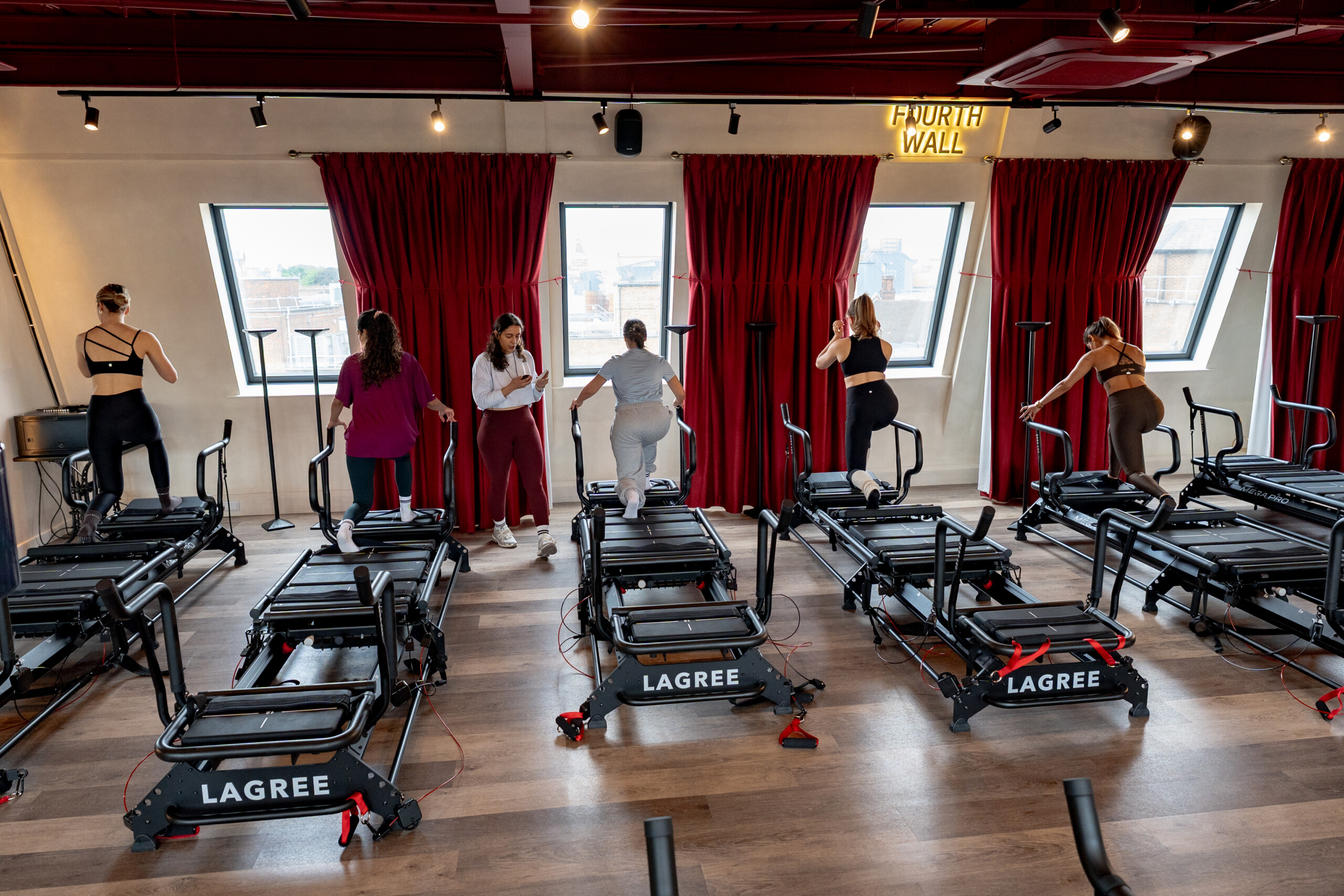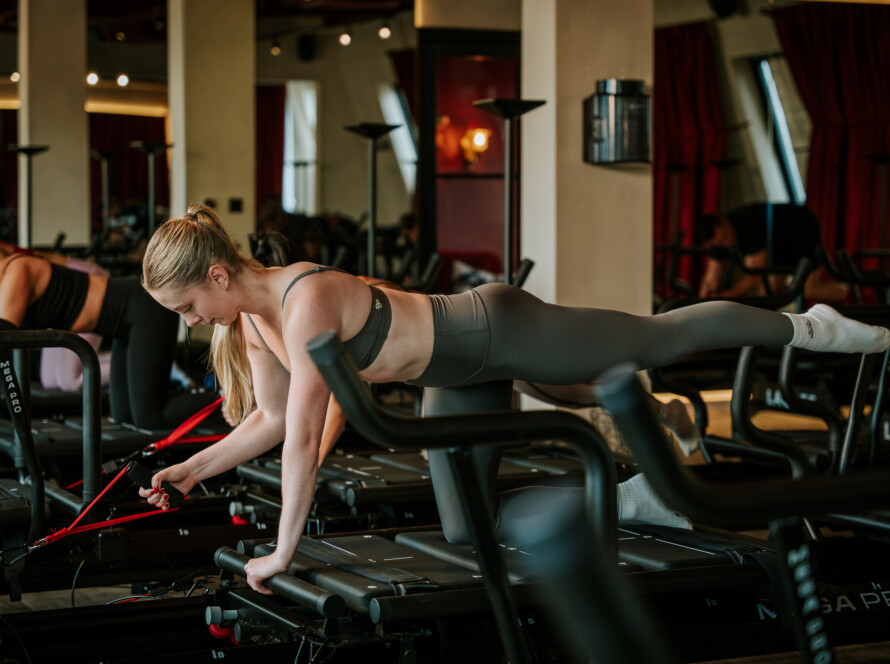You love how the Lagree Workout torches your core and builds endurance, but between work, family, and recovery, you keep asking one question: how many sessions per week make real progress? Are two sessions enough, or do you need more intensity and fewer rest days to boost strength and muscle endurance? This article answers how often one should do Lagree. It outlines the perfect frequency for maximum results, with clear guidance for beginners and advanced athletes, class length, recovery timing, and fitting sessions into a realistic weekly schedule.
Suppose you want to hit that perfect frequency for maximum results. In that case, Blood, Sweat, and Tears’ Lagree in London offers guided classes, tailored plans, and coaches who help you balance intensity, rest days, and progression so you see steady gains without burning out.
Understanding Lagree’s Unique Intensity
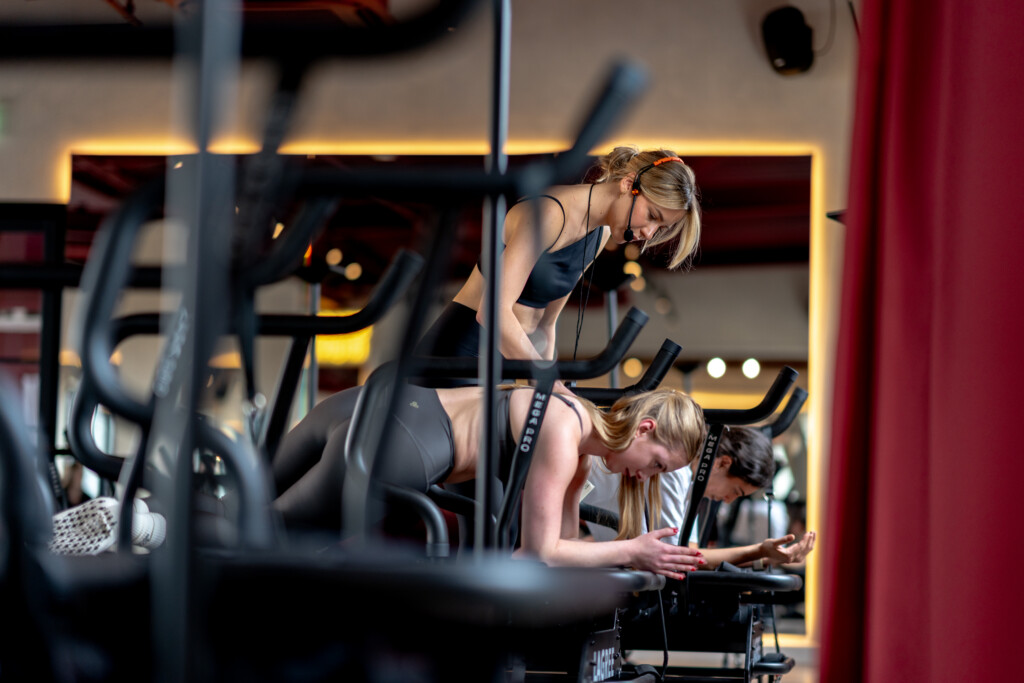
Lagree combines strength, cardio, endurance, and mobility into a single, compact session on the Megaformer. You stay under constant load, move slowly, and push each set toward failure. The result is a workout that taxes muscle fibers, raises your heart rate, and creates a metabolic aftereffect that continues to burn energy after you leave the studio.
Want to know why that translates to quicker changes in strength and body composition?
Slow and Controlled Movement That Eliminates Momentum
Each repetition in Lagree lasts at least four seconds for the lifting and lowering phases, so momentum cannot carry the weight. Moving deliberately forces muscles to remain contracted across the full range of motion and sharpens motor control while protecting joints. How you control tempo on the Megaformer determines recruitment patterns and technique quality for every muscle you use.
Constant Tension Keeps Muscles Working Without a Break
Lagree settings and exercises prevent even a brief reprieve for the working muscle. Muscles stay at near maximal tension through each set, so you recruit more fibers than with traditional reps that allow relaxation.
That continuous load increases time under tension and accelerates microlevel muscular adaptations during the session.
Muscle Failure That Recruits Every Motor Unit
Sets are structured to push through slow-twitch to fast-twitch fibers as fatigue progresses. You start with endurance-oriented fibers, then engage intermediate and finally high-force fast-twitch fibers during the last seconds.
That progression drives recruitment of the broadest possible range of motor units and creates a strong metabolic response in the muscle. The duration of each set and the proximity to technical failure determine the number of fiber types you encounter.
Multiple Muscles Working Together for Efficiency
Many Lagree movements chain joints and muscle groups, recruiting core stabilizers, prime movers, and smaller accessory muscles in the same rep. You end up working hundreds of muscles in a session, which raises:
- Calorie burn
- Improves coordination
- Builds functional strength faster than isolated movements
Want faster results per minute? Compound sequences deliver them.
Intensity That Raises Effort While Sparing Joints
Intensity in Lagree means high effort, not high impact. The Megaformer offers adjustable counter resistance so you can raise the challenge without loading the spine or hammering joints. That makes it straightforward to scale up intensity session to session while controlling mechanical stress and reducing injury risk.
Afterburn and Fat Loss: How EPOC Works with Lagree
Lagree aims to maximize excess post-exercise oxygen consumption by combining:
- High tension
- Progressive fatigue
- Whole body work
Research shows elevated oxygen consumption can persist for many hours after intense resistance or mixed modality sessions, which increases total energy expenditure and supports fat loss when paired with good nutrition.
How long the afterburn lasts depends on:
- Session intensity
- Duration
- Your fitness level
Related Reading
Recommended Lagree Workout Frequency by Experience Level
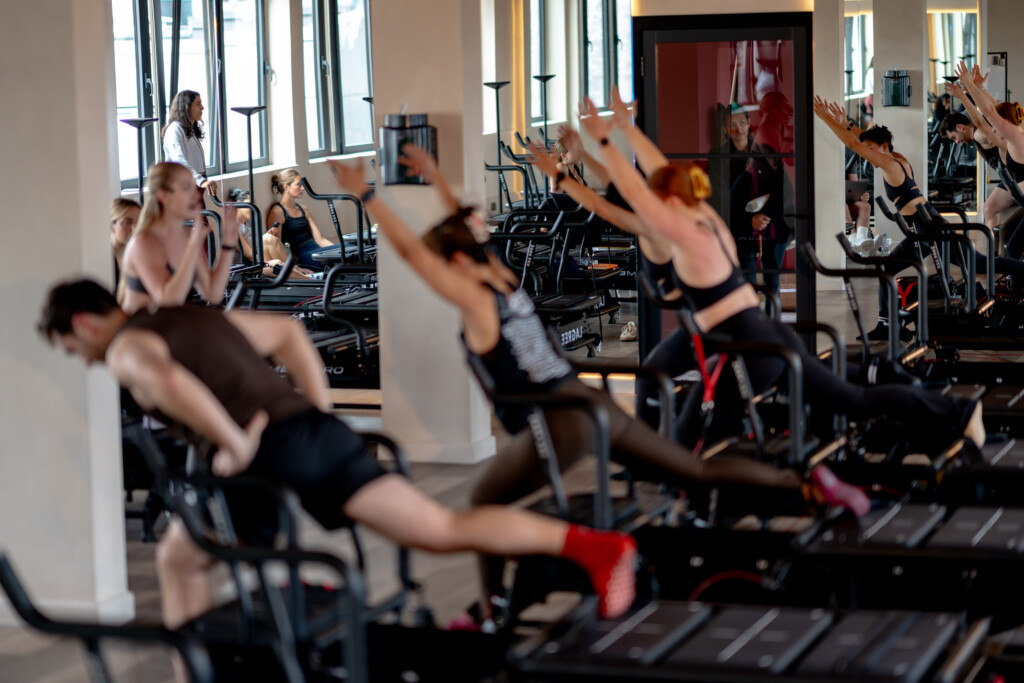
Beginners: Start Slow and Build Strength
Start with 1 to 2 Lagree sessions per week. The method employs very slow, controlled movements that induce profound fatigue in the muscles; this intensity necessitates time for recovery and the development of correct form. Focus on technique, breathing, and building a mind-to-muscle connection so each rep is effective.
How will you know you can add a session? Less post-workout soreness, consistent form through the whole class, and steady energy between sessions are good signs to increase frequency.
Intermediate to Advanced: Build Consistency and Manage Volume
Most regular Lagree clients train 3 to 5 sessions per week to improve strength, core stability, and muscular endurance while still recovering properly. Advanced trainees can train up to 6 times per week.
Still, that level requires careful planning:
- Alternate higher intensity days with lighter sessions
- Schedule complete rest or active recovery days
- Prioritize sleep and nutrition
For active recovery, track class intensity, watch for persistent performance drops or prolonged soreness, and use:
- Mobility work
- Walking
- Yoga
How many sessions can you commit to without sacrificing recovery and life outside the studio?
Session Length, Volume, and Intensity Modulation
Typical sessions run 40 to 50 minutes and mix slow strength sequences with dynamic transitions to maintain heart rate. You can increase the challenge by adjusting spring resistance, adding holds, or increasing rep time.
Reduce volume or intensity when you sense:
- Persistent soreness
- Rising resting heart rate
- Declining performance
Listen to Performance Metrics and Recovery Signals
Track your:
- Movement
- Sleep patterns
- How your lifts respond
If your technique slips or you stop improving, consider cutting back on frequency or intensity for a week to focus on mobility and aerobic recovery. Progress comes from smart stress plus deliberate recovery, not from piling on sessions without adaptation.
Programming Tips for Sustainable Progress
Alternate Lagree with low-impact cardio, targeted strength sessions, or mobility work to round out your training week. Use planned deload weeks every four to eight weeks and rotate emphasis between strength endurance and muscular power. How you periodize sessions determines long-term gains and injury resilience.
Why Lagree Appeals to Women: Safe, Efficient Training Backed by Science
BLOOD, SWEAT & TEARS provides a women-focused fitness space where certified instructors guide 45-minute Lagree classes that combine strength and cardio, enabling clients to see and feel results in just two weeks while avoiding injury.
Book a class to try Lagree in London and experience why Lagree has been America’s fastest-growing workout three years in a row.
Importance of Rest and Recovery
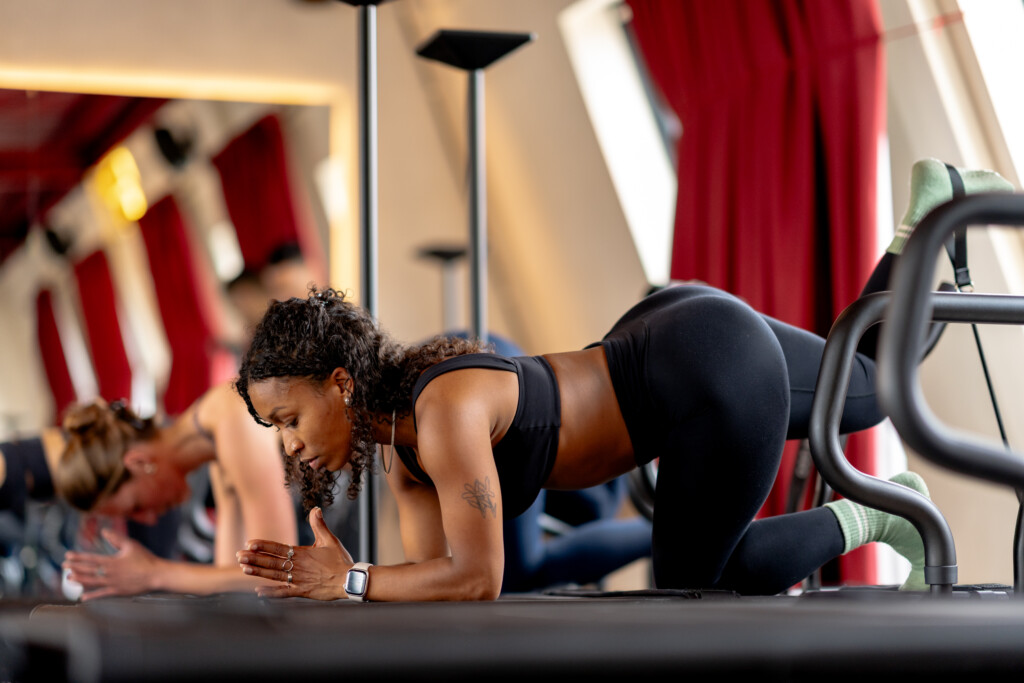
Exercise creates tiny tears in muscle fibers. During rest, fibroblasts and other repair cells rebuild that tissue and add contractile proteins, so muscles come back stronger and denser. Lagree training uses sustained resistance and high time under tension, which produces a lot of metabolic and mechanical stress; that increases the need for recovery and glycogen replenishment.
Aim for at least 48 hours between high-intensity Lagree sessions targeting the same muscle groups, and space your weekly routine so that hard days are followed by light or recovery days.
How Rest Stops Muscle Fatigue and Keeps You Fresh
Glycogen fuels your muscles. Intense Lagree work depletes those stores, leaving you sore and slow if you resume full effort before they refill.
Short-term fatigue shows up as:
- Fewer reps
- Weaker contractions
- Sloppy form
To speed glycogen refill and clear metabolic byproducts, use active recovery strategies such as:
- Low-intensity mobility
- Walking
- Foam rolling
Pair recovery days with proper post-workout nutrition and sleep to shorten the window of fatigue.
How Smart Rest Lowers Your Risk of Injury in Lagree
Training when you are tired increases the chance of:
- Technical breakdown
- Slips
- Overuse damage
Overuse issues like tendinopathies and stress reactions often start when volume or intensity jumps without enough repair time.
A study in BMC Musculoskeletal Disorders found overuse injuries to be common in athletes and linked to extended time away from training. Schedule rest days and rotate intensity to avoid stacking too many hard Lagree sessions in a row, which can increase the risk of a long layoff from injury.
How Recovery Boosts Your Lagree Performance
Under recovery, you lose:
- Power
- Endurance
- Agility
Proper rest restores nervous system readiness, enabling you to push for:
- Extra reps
- Better tempo control
- Higher resistance on the Megaformer
Finding the Right Weekly Rhythm for Lagree
Structure your weeks with clear frequency goals: beginners usually do Lagree two times per week, regular practitioners three to four times per week, and advanced clients may train more often if they include planned lower intensity days and recovery strategies.
Use a deload week every four to eight weeks when you lower volume or intensity to let gains consolidate.
How Rest Protects Sleep and Hormone Balance for Better Results
Chronic intense training raises cortisol and adrenaline. That can disturb sleep and slow the hormonal recovery that repairs muscle and refills energy stores. Rest days help hormones settle, which improves sleep quality and speeds tissue repair.
To protect sleep, avoid very late high-intensity sessions, prioritize consistent bed and wake times, and include at least one complete rest or light active recovery day each week to keep your recovery system aligned with training demands.
How to Listen to Your Body
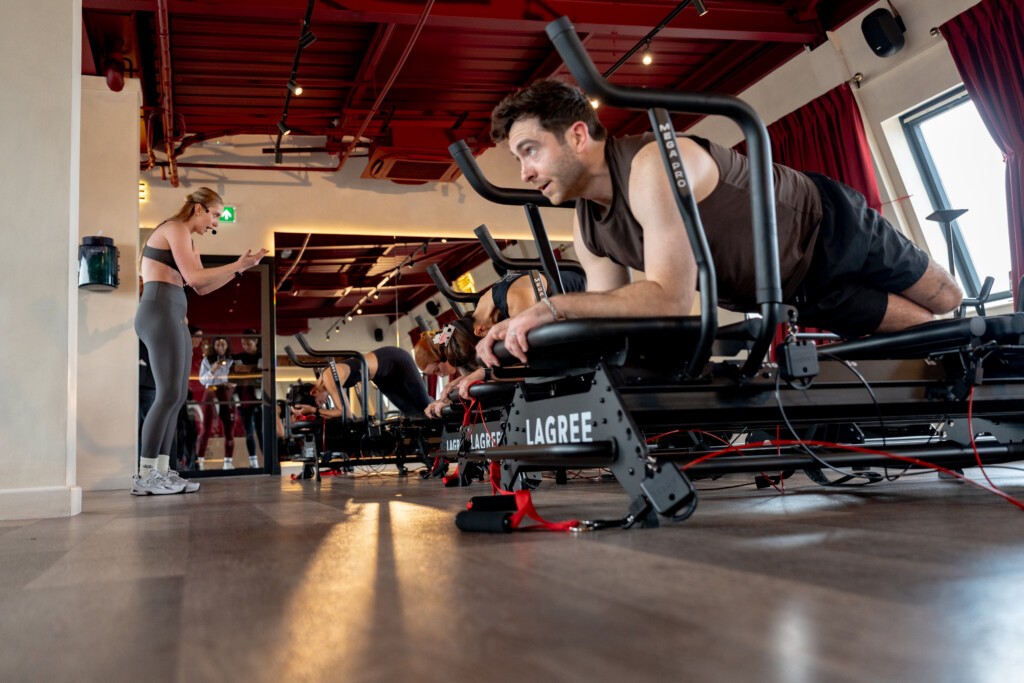
Tune Your Senses
Start with simple, repeatable checks each day.
Ask: How is my breathing during exercise? Can I hold a conversation, or do I need to gasp? Use Rate of Perceived Exertion from 1 to 10 to gauge effort and adjust resistance or tempo. Distinguish sharp or joint pain from general muscle burn; sharp pain demands immediate modification or stop.
Track sleep quality, appetite, mood, and resting heart rate as indirect signals of recovery and stress. Minor data points add up and should inform whether you push, modify, or rest.
Red Flags: Recognising Overtraining Early
Watch for persistent fatigue, a sudden drop in performance, soreness lasting more than three days, and trouble sleeping. Increased resting heart rate, recurring colds, loss of motivation, and mood swings also signal too much load or too little recovery.
Pay attention if the technique breaks down under usual resistance or if minor aches escalate into aggravated joints. Treat these signs as prompts to test load, cut frequency, or schedule extra recovery rather than proof that you must train harder.
Smart Frequency: How Often Should You Do Lagree
Match session frequency to your experience and goals. Beginners should aim for one to two 45-minute sessions per week to build base strength and adapt to the controlled, high-tempo work.
Intermediate trainees can progress to two or three sessions per week, and advanced clients often top out around three to four sessions weekly while prioritizing recovery days between intense classes.
Balancing Intensity and Recovery with Smart Scheduling
Use periodization: rotate higher intensity weeks with lower volume or deload weeks to manage training volume and enable progressive overload. Ask yourself how well you recover between classes before adding another session.
Adjust and Recover: When to Scale Back
When the body signals overreach, reduce session count or intensity for a week rather than forcing through.
To maintain movement without piling stress on muscles, swap a whole class for active recovery, such as:
- Walking
- Mobility work
- Gentle stretch session
Shorten class time, lower resistance, slow tempo, or cut the number of sets to protect joints and the central nervous system. Prioritize sleep, protein, hydration, and soft tissue work to accelerate repair and preserve long-term gains.
Log It: Track Progress and Energy Levels
Keep a simple log with:
- Date
- Session type
- Resistance level
- RPE
- Sleep
- Soreness rating
- Mood or energy was scored on a scale of 1 to 10
Note objective markers like resting heart rate, class resistance used, and whether reps hit the target tempo. Review every two weeks to spot trends that justify changing frequency, intensity, or recovery strategies. Use that evidence to plan a weekly class schedule that balances adaptation and rest.
Expert Coaching That Delivers Fast, Safe Results
BLOOD, SWEAT & TEARS offers a women-focused fitness space that combines strength and cardio into a 45-minute session, led by certified instructors who undergo rigorous mentorship to ensure every class is safe, motivating, and effective.
Book a class to try Lagree in London and see how quickly the programming produces results. In just two weeks of consistent attendance, clients report noticeable changes and improvements, all while avoiding the guesswork and injury risk common in other gyms.
Related Reading
Benefits of Consistent Lagree Practice

Custom Intensity That Grows With You
The Megaformer makes Lagree work for every fitness level by letting you change tension and tempo. Start with simpler setups and slower repetition to learn alignment and breathing, then increase carriage tension, spring resistance, or tempo as strength and endurance improve.
Trainers can scale single exercises to create progressive overload while limiting joint stress, so you build capacity without rapid jumps in training volume. Want measurable progress? Track resistance settings, repetition tempo, and session duration from week to week.
Hard Work Without Beating Up Your Joints
Lagree pairs slow controlled motion with constant muscle engagement, producing high intensity while keeping impact low. That approach reduces compressive forces on knees, hips, and spine compared with running or plyometric sessions, making it a strong option for clients with prior injuries or anyone who needs joint-friendly conditioning.
The controlled cadence also lowers the risk of compensatory movement patterns that lead to flare-ups. Do you need an intense session that does not punish your joints after a long day?
Total Body Strength With a Core First Focus
Every Megaformer exercise asks the trunk to stabilize while limbs move, so core strength develops alongside limb strength and balance. The method targets slow-twitch muscle fibers through long-term under tension, which favors toned, functional musculature rather than large bulk.
You recruit posterior chain, glutes, shoulders, and deep stabilizers in the same set, improving posture and movement efficiency for sports or daily tasks. Notice how balance and control improve as you hold positions longer and reduce momentum.
Real World Strength You Can Use Every Day
Movements on the machine mirror pressing, pulling, hinging, and squatting patterns that you perform outside the studio. That makes strength directly transferable to lifting children, loading groceries, or working at your desk without strain.
The focus on joint integrity and scapular control lowers the chance of overuse injuries while increasing usable force in practical tasks. Ask yourself which daily tasks feel easier after a month of consistent sessions.
Progress On Your Schedule
Lagree rewards precision more than volume. Slow controlled repetitions let you observe technique faults and correct them immediately, which speeds motor learning.
Beginners can build a base with two to three sessions per week focused on form, while experienced athletes add frequency or intensity to push adaptations. Adjust session frequency and resistance to manage fatigue and maintain steady progress.
Focus, Calm, and Improved Mental Control
The concentration required for slow tempo work strengthens the mind-body connection and reduces distractibility during training. That focused effort lowers stress hormones and improves mental clarity after a session, giving many clients better concentration throughout the day.
New exercisers learn body awareness and breathing, while advanced clients use the routine as a performance-centered practice that sharpens control under load.
How Often Should You Do Lagree: Practical Frequency Guide
The number of sessions per week depends on your goals, intensity levels, and recovery capacity. For general toning and improved endurance, aim for two to three sessions per week with active recovery days in between, which balances training volume and rest.
If you seek more rapid strength or conditioning gains, progress to three to five sessions weekly while managing total weekly load through shorter sessions or lower resistance on some days.
Balancing Recovery Days With Sustainable Progress
Include at least one rest day and one light cross-training day, such as walking or mobility work, to assist recovery and reduce cumulative fatigue. For maintenance, one to two sessions per week preserves strength and neuromuscular control while freeing time for other activities.
Track signs of underrecovery, such as persistent soreness or sleep disruption, and reduce the frequency or intensity of the treatment if those symptoms appear.
Book a Lagree Class in London Today
BLOOD, SWEAT & TEARS builds a women-focused fitness space that removes guesswork. Classes combine precise strength work and steady cardio inside a controlled 45-minute session. Trainers guide every move to maximize muscle engagement while keeping the range of motion safe.
That means clients get measurable change faster than spending hours alone on machines or aimless cardio, and they do it without trading results for higher injury risk.
How Often Should You Do Lagree to Get Real Progress
How often you should do Lagree depends on your current fitness, goals, and recovery. Beginners see benefit from two full sessions per week. Most people aiming for visible composition changes should train three times per week.
If you already have a base of strength or want faster progression, four sessions per week work well, provided you manage recovery. Ask yourself what you can consistently commit to and then scale intensity, not just frequency.
What a 45 Minute Class Delivers: Strength and Cardio in One
Every class blends slow controlled resistance to build strength with continuous movement that raises heart rate.
That mix yields:
- Higher calorie burn
- Improved muscle tone
- Better metabolic conditioning
Because sets are dense and deliberate, you get full-body stimulus without long workouts. The result is efficient conditioning that fits a busy schedule and replaces hours of scattered gym time.
How to Schedule Lagree Sessions for Smart Training Frequency
Pair Lagree days with lighter activity or mobility work on off days. A simple weekly split might look like two Lagree sessions with one active recovery day, or three sessions with two mobility or low-impact cardio days.
For four sessions, place a recovery day after two consecutive classes. Maintain consistent spacing to allow muscles about 48 hours to recover between high-intensity sessions targeting the same muscle groups.
Recovery Rules That Let You Train More Without Injury
Muscle fatigue, sleep, nutrition, and stress determine how often you can safely train.
To speed muscle repair, prioritize:
- Protein
- Hydration
- Quality sleep
Use foam rolling and targeted mobility to relieve tight areas.
If you feel prolonged soreness, slow your training frequency or reduce class intensity until strength and range of motion return. Listen to movement quality in class rather than pushing through form breakdown.
Safety Standards That Protect You During Every Class
All instructors at BLOOD, SWEAT & TEARS are certified and complete a rigorous mentorship program. They check alignment, scale exercises, and cue recovery options. Small group attention prevents unsafe loading and reduces the chance of overtraining.
The studio atmosphere stays clean, uplifting, and motivating, so members focus on performance rather than discomfort.
Can You Do Lagree Every Day If You Want Faster Change
Daily sessions are rarely necessary and often counterproductive because Lagree stresses slow eccentric control and high time under tension. Training daily can reduce force production and increase injury risk if recovery is insufficient. If you prefer high frequency, rotate intensity. Make some classes heavy and others lighter or skill-focused so tissues can adapt.
Seeing Results in Two Weeks: What to Expect Early On
Consistency for two weeks delivers noticeable changes in posture, muscle tone, and energy. Expect improved muscular endurance and a tighter feeling in common trouble spots. Although visible fat loss may be limited at first, clients report feeling stronger and more confident during daily activities.
Track progress with simple measures, such as how clothes fit and performance lifts, rather than just scale weight.
Booking a Class and What to Bring
Ready to test a session? Book a class online, arrive hydrated, and bring grippy socks if required by the studio. Show up open to coaching and prepared to follow scaling options. The class structure and instructor coaching will guide intensity so you get a practical session tailored to your fitness level.


